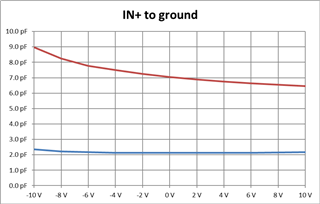Other Parts Discussed in Thread: TL081, TL072, TL072H, OPA1642, TL052, , TL082, TL082H
According to this technical note, The old JFET TL072 had increasing distortion with increasing source impedance, which I assume was also true of the old TL081. Do the new H models still have this issue given that it is listed as a CMOS part now rather than JFET?
Thanks,
Ted



